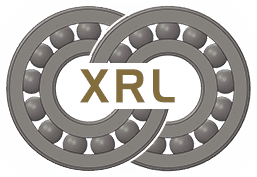Bearing steel is mainly used to manufacture rolling elements and rings of rolling bearings. Because the bearing should have long life, high precision, low heat generation, high speed, high rigidity, low noise, high wear resistance, etc., the bearing steel should have: high hardness, uniform hardness, high elastic limit, high contact fatigue Strength, necessary toughness, certain hardenability, corrosion resistance in lubricants in the atmosphere. In order to meet the above performance requirements, the requirements for the uniformity of the chemical composition of the bearing steel, the content and type of non-metallic inclusions, the size and distribution of carbides, and decarburization are strict. Bearing steel is generally developing towards high quality, high performance and multiple varieties. Bearing steel is divided into high carbon chromium bearing steel, carburizing bearing steel, high temperature bearing steel, stainless bearing steel and special special bearing materials according to characteristics and application environment. In order to meet the requirements of high temperature, high speed, high load, corrosion resistance and radiation resistance, a series of new bearing steels with special properties need to be developed. In order to reduce the oxygen content of bearing steel, smelting technologies for bearing steel such as vacuum smelting, electroslag remelting, and electron beam remelting have been developed. The smelting of large quantities of bearing steel has been developed from electric arc furnace smelting to various types of primary smelting furnaces and external furnace refining. At present, bearing steel with a capacity of more than 60 tons + LF / VD or RH + continuous casting + continuous rolling processes is used to produce bearing steel in order to achieve the purpose of high quality, high efficiency and low energy consumption. In terms of heat treatment process, the car bottom furnace and hood furnace have been developed into a continuously controlled atmosphere annealing furnace for heat treatment. At present, the continuous heat treatment furnace type has a maximum length of 150m, and the nodular structure of the bearing steel is stable and uniform, the decarburization layer is small, and the energy consumption is low.
Bearing steel should have the following properties:
1. High contact fatigue strength.
2. High abrasion resistance.
3. High elastic limit and yield strength.
4. High and uniform hardness.
5, a certain impact toughness.
6. Good dimensional stability.
7, good corrosion inhibition performance.
8. Good process performance.
Bearing steel common materials:
The selection of bearing steel materials also requires specific purchase. For bearing materials that work under special conditions, according to their specific requirements, they should also have special properties that are compatible with their conditions, such as: high temperature resistance, low temperature resistance, corrosion resistance, Anti-radiation, anti-magnetic and other characteristics.
Full hardened bearing steel is mainly high carbon chromium steel, such as GCr15, which has a carbon content of about 1% and a chromium content of about 1.5%. In order to improve the hardness, wear resistance and hardenability, some silicon, manganese, molybdenum, etc., such as GCr15SiMn, are appropriately added. This type of bearing steel has the largest output, accounting for more than 95% of all bearing steel output.
Carburizing bearing steel is a chromium, nickel, molybdenum alloy structural steel with a carbon content of 0.08 to 0.23%. The surface of the bearing part is carbonitrided to improve its hardness and wear resistance. This steel is used for manufacturing Large bearings that bear strong impact loads, such as large rolling mill bearings, automotive bearings, mining machine bearings, and railway vehicle bearings.
Stainless bearing steels include high carbon chromium stainless bearing steels, such as 9Cr18, 9Cr18MoV, and medium carbon chromium stainless bearing steels, such as 4Cr13, etc., which are used to make stainless and corrosion-resistant bearings.
High temperature bearing steel is used at high temperature (300 ~ 500 ℃). It is required that the steel has certain red hardness and wear resistance at the use temperature. Most of them use high-speed tool steel substitutes, such as W18Cr4V, W9Cr4V, W6Mo5Cr4V2, Cr14Mo4 and Cr4Mo4V.
Post time: Jul-21-2021
